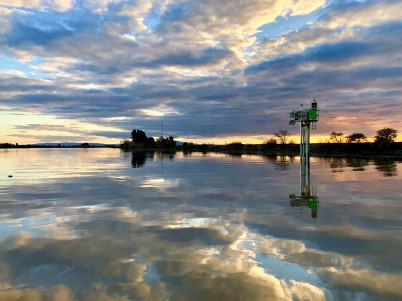Principal Investigator
Catherine Ruhl, cruhl@usgs.gov
U.S. Geological Survey
Looking for Data?
All data are available through USGS NWIS-Web.

USGS Flow and Water Quality Monitoring Station 11455385, Cache Slough above Ryer Island Ferry.
USGS photo by Joseph Hatfield